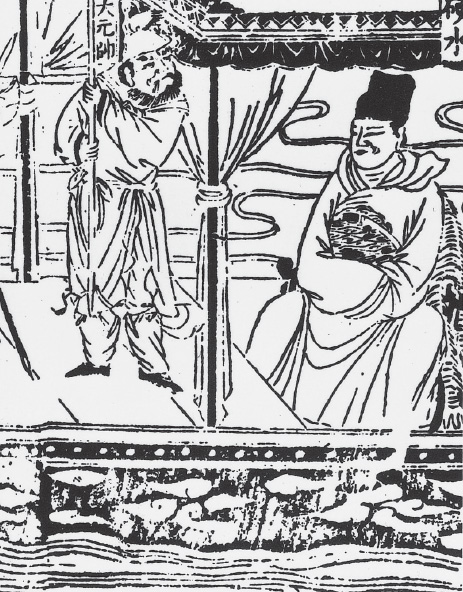IN 1403 THE CHINESE EMPEROR YONGLE ordered his coastal provinces to build a vast fleet of ships, with construction centered at Longjiang near Nanjing. The inland provinces were to provide wood for the ships and float it down the Yangzi River. Thirty thousand shipwrights, carpenters, sailmakers, ropers, and caulkers worked in a frenzy. As work progressed, Yongle selected a commander for the fleet. The emperor chose Zheng He (1371–1433), despite fearing that the thirty-five-year-old was too old for so politically important an expedition. The decision rested on Zheng’s unquestioned loyalty, strength of character, energy, ability, and eloquence. These qualities apparently were expected to compensate for Zheng’s lack of seamanship.
The southwestern province of Yunnan, where Zheng was born, had a large Muslim population, and he was raised in that faith. When the then prince Zhi Di defeated the Mongols in Yunnan, Zheng’s father was killed in the related disorder. The young boy was taken prisoner and, as was the custom, castrated. Raised in Zhi Di’s household, he learned to read and write, studied Confucian writings, and accompanied the prince on all military expeditions. By age twenty Zheng was not the soft, effeminate stereotype of the eunuch; rather he was “seven feet tall and had a waist five feet in circumference. His cheeks and forehead were high . . . [and] he had glaring eyes . . . [and] a voice loud as a bell. . . . He was accustomed to battle.” Zheng must have looked imposing. A devout Muslim, he persuaded the emperor to place mosques under imperial protection after a period of persecution. On his travels, he prayed at mosques at Malacca and Hormuz. Unable to sire sons, he adopted a nephew. When Zheng became a naval commander under Yongle, he was the first eunuch in Chinese history to hold such an important position.
The fleet for Zheng’s first expedition was composed of 317 ships, including junks, supply ships, water tankers, warships, transports for horses, and patrol boats, and carried twenty-eight thousand sailors and soldiers; it was the largest naval force in world history before World War I. Because it bore tons of beautiful porcelains, elegant silks, lacquer ware, and exquisite artifacts to be exchanged for goods abroad, it was called the “treasure fleet.”
Between 1405 and 1433, Zheng led seven voyages, which combined the emperor’s diplomatic, political, geographical, and commercial goals (see Map 16.1). During the voyages he worked toward Yongle’s goal of securing China’s hegemony over tributary states and collecting pledges of loyalty from them. Zheng also sought information on winds, tides, distant lands, and rare plants and animals, and he sailed as far west as Egypt to gather it. Because smallpox epidemics had recently hit China, another purpose of his voyages was to gather pharmacological products. An Arab text on drugs and therapies was secured and translated into Chinese. He also brought back a giraffe and mahogany, a wood ideal for ships’ rudders because of its hardness.
Just before his death, Zheng recorded his accomplishments on stone tablets. The expeditions had unified “seas and continents . . . the countries beyond the horizon from the ends of the earth have all become subjects . . . and the distances and routes between distant lands may be calculated,” implying that China had accumulated considerable geographical information. From around the Indian Ocean, official tribute flowed to the Ming court as a result of Zheng’s efforts. A vast immigration of Chinese people into Southeast Asia, sometimes called the Chinese diaspora, came into being after the expeditions. Immigrants carried with them Chinese culture, including social customs, diet, and practical objects of Chinese technology—calendars, books, scales for weights and measures, and musical instruments. With legends collected about him and monuments erected to him, Zheng became a great cult hero.
Source: Louise Levathes, When China Ruled the Seas: The Treasure Fleet of the Dragon Throne, 1405–1433 (New York: Oxford University Press, 1996).
QUESTIONS FOR ANALYSIS
Question
1. What do the voyages of the treasure fleet tell us about China in the fifteenth century?
Question
2. What was Zheng He’s legacy?
